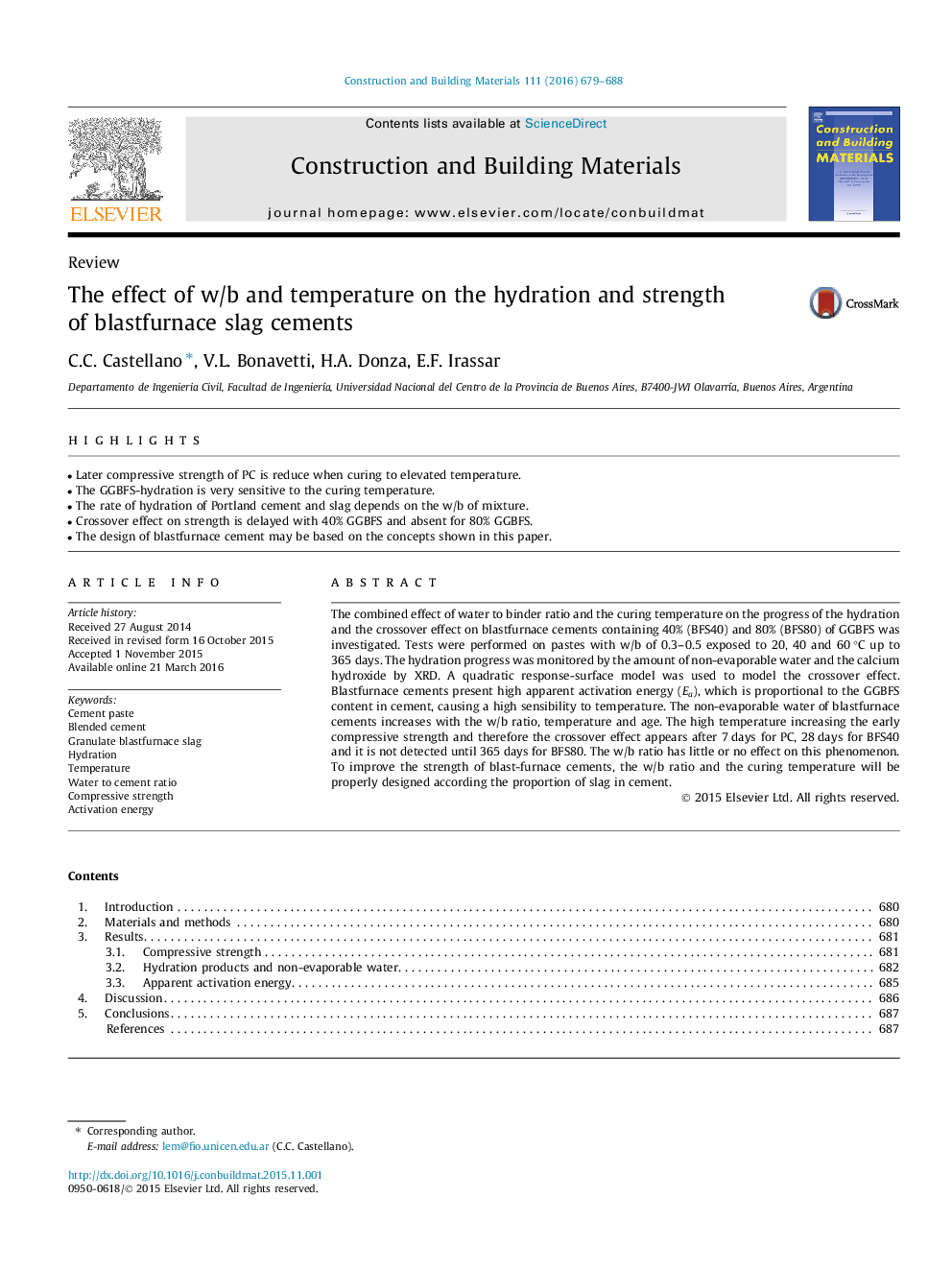| کد مقاله | کد نشریه | سال انتشار | مقاله انگلیسی | نسخه تمام متن |
|---|---|---|---|---|
| 6719031 | 503539 | 2016 | 10 صفحه PDF | دانلود رایگان |
عنوان انگلیسی مقاله ISI
The effect of w/b and temperature on the hydration and strength of blastfurnace slag cements
دانلود مقاله + سفارش ترجمه
دانلود مقاله ISI انگلیسی
رایگان برای ایرانیان
کلمات کلیدی
موضوعات مرتبط
مهندسی و علوم پایه
سایر رشته های مهندسی
مهندسی عمران و سازه
پیش نمایش صفحه اول مقاله

چکیده انگلیسی
The combined effect of water to binder ratio and the curing temperature on the progress of the hydration and the crossover effect on blastfurnace cements containing 40% (BFS40) and 80% (BFS80) of GGBFS was investigated. Tests were performed on pastes with w/b of 0.3-0.5 exposed to 20, 40 and 60 °C up to 365 days. The hydration progress was monitored by the amount of non-evaporable water and the calcium hydroxide by XRD. A quadratic response-surface model was used to model the crossover effect. Blastfurnace cements present high apparent activation energy (Ea), which is proportional to the GGBFS content in cement, causing a high sensibility to temperature. The non-evaporable water of blastfurnace cements increases with the w/b ratio, temperature and age. The high temperature increasing the early compressive strength and therefore the crossover effect appears after 7 days for PC, 28 days for BFS40 and it is not detected until 365 days for BFS80. The w/b ratio has little or no effect on this phenomenon. To improve the strength of blast-furnace cements, the w/b ratio and the curing temperature will be properly designed according the proportion of slag in cement.
ناشر
Database: Elsevier - ScienceDirect (ساینس دایرکت)
Journal: Construction and Building Materials - Volume 111, 15 May 2016, Pages 679-688
Journal: Construction and Building Materials - Volume 111, 15 May 2016, Pages 679-688
نویسندگان
C.C. Castellano, V.L. Bonavetti, H.A. Donza, E.F. Irassar,